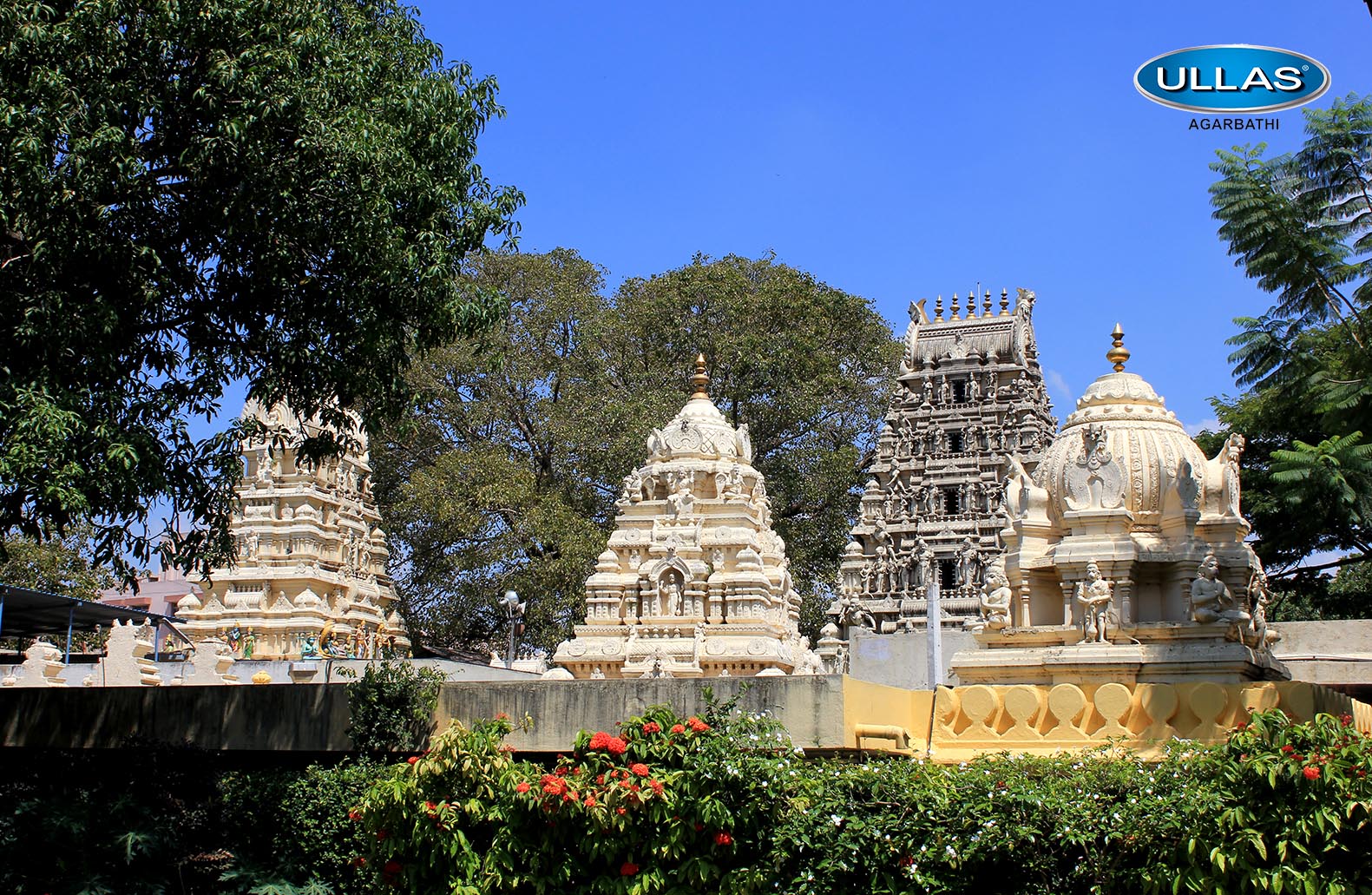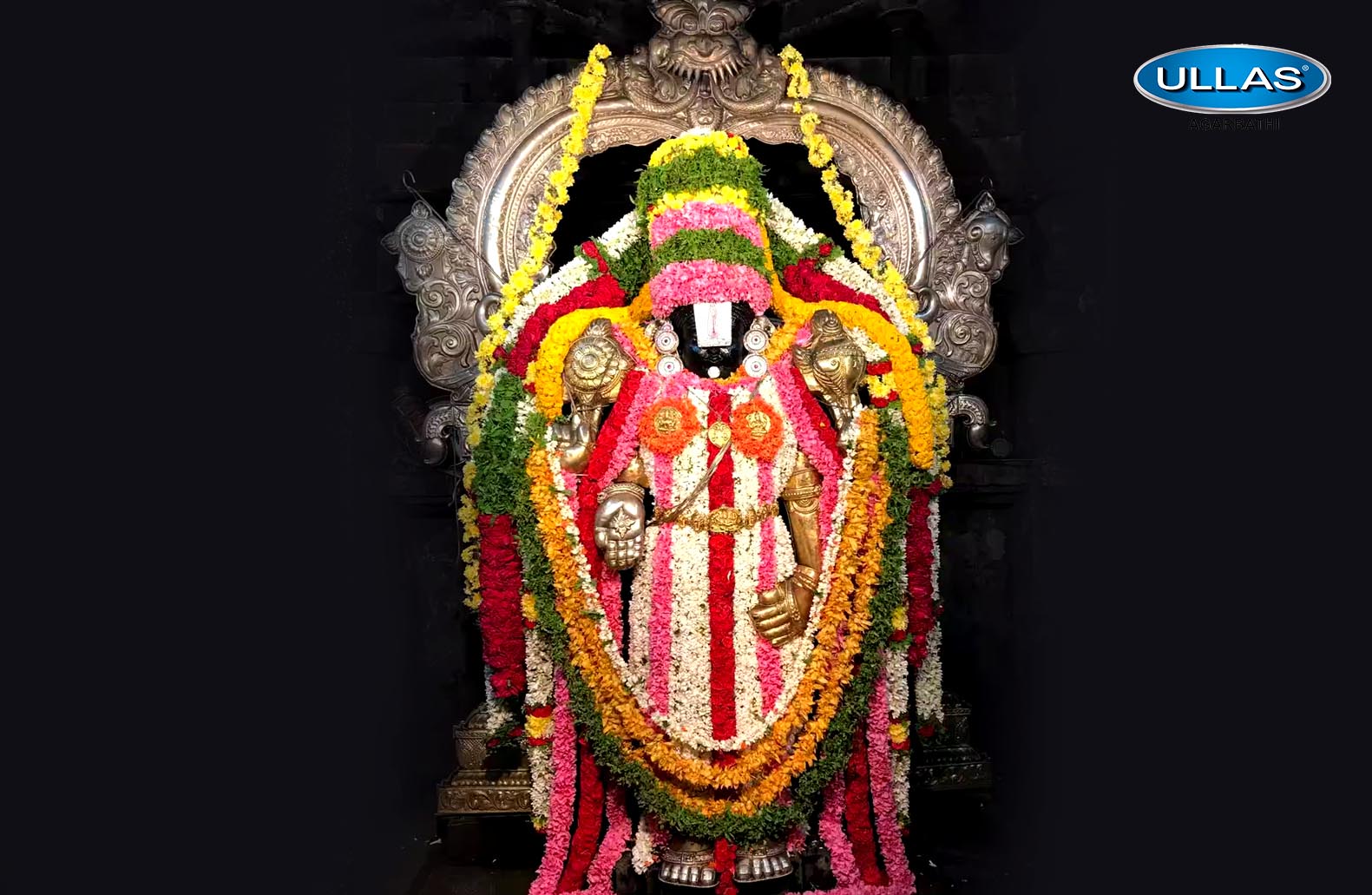Kote Venkataramana Temple, Bangalore
Kote Venkataramana Temple is a Hindu temple in Krishnarajendra Road, Bangalore,
India dedicated to the god Venkateshwara.

Kote Venkataramana Temple is a Hindu temple in Krishnarajendra Road, Bangalore, India dedicated to the god Venkateshwara. The temple was built in 1689 in Dravidian and Vijayanagara style by King Chikka Devaraja Wodeyar, then ruler of Mysore.
The late 17th century Venkataramana temple is located near the old fort ("fort" is kote in Kannada language) adjacent to what was once the residence of Mysore Wodeyar royal family, and later became the palace of Tipu Sultan, a later ruler of the Mysore Kingdom.
The temple consists of a sanctum (garbhagriha) which is connected to a central hall (mantapa) by a vestibule. The walls of the sanctum and vestibule (antechamber) are plain but for a row of deity sculptures in frieze at the base. On the whole the temple exudes modest decorative work and follows the general plan used in the temples within the palace complex in Mysore. The hall ceiling is supported by pillars that have "clusters of colonettes" alternating with yalis (mythical beasts from Hindu legend) in all four directions. This appears on each of the central columns.
The main festival celebrated here is Vaikuntha Ekadashi when thousands of devotees throng the temple. This temple provided the setting for the treasure hunt in the book Riddle of the Seventh Stone

History Of Kote Venkataramana Temple, Bangalore
Kote Sri Prasanna Venkataramana Swamy temple built-in 1689 AD by King Shri Chikkadevaraja Wodeyar, the erstwhile Mysore ruler is one of the oldest temples in Bangalore. The Temple built in the Dravidian and Vijayanagara style of architecture has stone walls around the sanctum. The Sanctorum around the temple portrays the architecture of Girija Kalyana and with various ideals comprising of Brahma, Vishnu, Maheswara, Saptha Rishis, Saptha Matrukas and Ashta Dikpalakas. The temple also features four huge pillars with amazing carvings of Navaranga sculptures. To its southwest is Sri Anjaneya Swamy and Sri Mahalakshmi Sannidi features to its northwest.
The main deity of the divine shrine, Sri Prasanna Venkataramana Swamy is wonderfully carved in Saligrama Stone and consecrated in sanctum sanctorum. The devotees can also have darshan of Sri Padmavathi and Sri Anjaneya Swamy in the same temple complex. The temple which is administered by Muzrai Department of Government of Karnataka decorates the temple on Brahma Rathotsava. It would be delight to see the grandeur celebrations of this on Navratri Utsav.
This 15th Century temple which is located near the old fort (hence the name “Kote” in the Kannada language) which is adjacent to the temple was once the residence of Mysore Wodeyar royal family. Later the temple became summer palace for Tipu Sultan, a later ruler of Mysore Kingdom. It is believed that Tipu Sultan was saved by the Garuda Gamba (Pillar) which exists till today in the temple. Both Tipu Sultan and his father Hyder Ali had enormous reverence and regard to this temple. This temple even finds its place as a setting or the treasure hunt in a book written by Monideepa Sahu. Being one of the oldest temples in the city with historical significance, Kote Venkataramana Swamy Temple is one of the main tourist and religious attraction in Bangalore.
In 1811, His Highness Shri Mummudi Krishnanraja Wodeyar performed the first pooja here before conducting a special durbar at Tippu’s Summer Palace behind the temple.

